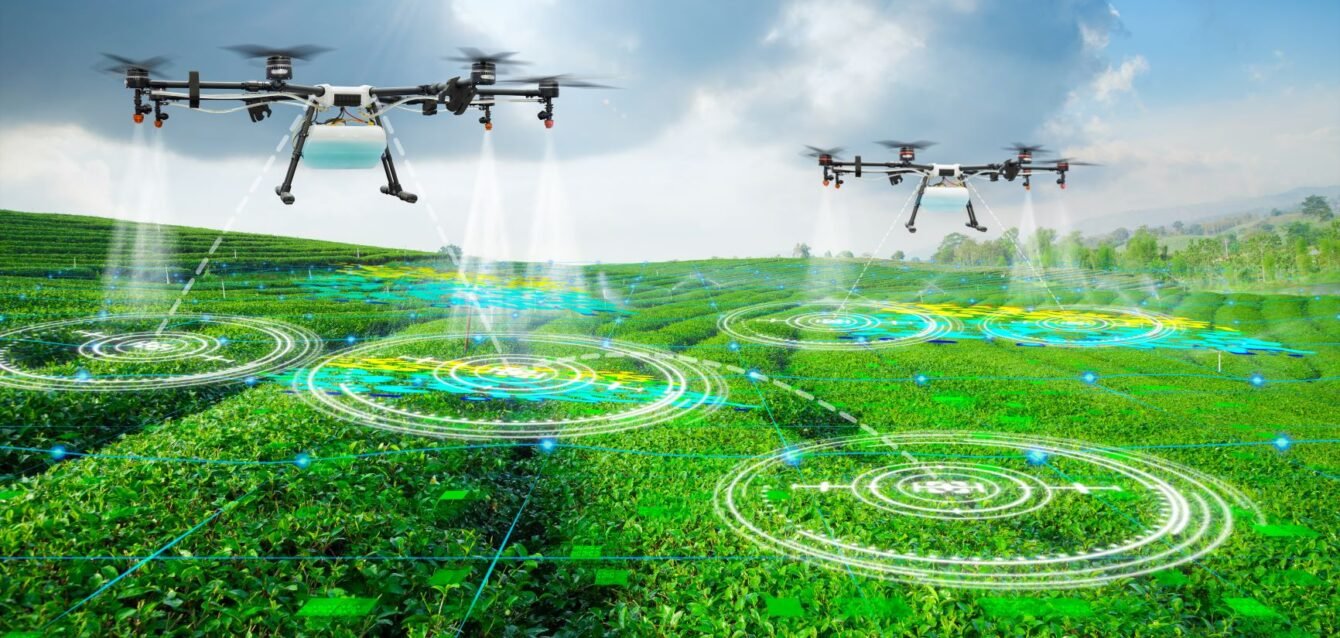When Soil Meets Silicon
For centuries, agriculture has followed the cadence of nature — guided by the wisdom of elders, the patterns of the moon, and the pulse of the seasons. Then came the code. Algorithms, sensors, and satellites began whispering to the soil, promising yields and precision. But something got lost in translation.
Technology didn’t just knock on the farmhouse door — it barged in, sometimes with more arrogance than empathy. And yet, for many farmers, the question isn’t whether to adopt tech. It’s how to do it without surrendering identity, autonomy, and ancestral knowledge. Because for those whose fingers are calloused from decades of planting, a sensor can’t replace instinct — it can only complement it.
Table of Contents
1. The Cultural Clash Myth: Are Tradition and Innovation Really Opposed?
What We Mean by “Traditional”
Traditional farming doesn’t mean outdated. It means time-tested. It means knowing when the soil is ready by its scent, or predicting rain by the behavior of birds. It spans from Andean terraces to Sahelian intercropping, passed down orally rather than uploaded to the cloud.
Why Resistance Exists
Contrary to stereotypes, many traditional farmers aren’t anti-tech. They’re anti-disruption. Resistance often stems from bad experiences: a failed government pilot project, a foreign NGO’s app that didn’t translate (literally or culturally), or tools that worked in demos but broke down in the field.
In Kenya, a maize farmer once said: “I don’t fear the drone. I fear the day it flies over and still misses my struggle.”
Maybe it’s not a tech problem. Maybe it’s a translation problem.
2. What Technology Actually Works on the Ground?
2.1 Smart Sensors That Speak Plant Language
Affordable IoT devices now measure soil moisture, pH levels, and nutrient content. But the genius is in localization. In India, the e-Choupal initiative combined internet kiosks with real-time sensor feedback, allowing farmers to adjust irrigation before the crop wilted — not after.
2.2 AI That Listens to the Land
Machine learning models now predict crop diseases days before symptoms appear. But success hinges on data quality. In Ghana, poor datasets led to false alarms, eroding trust. AI needs local data, not just global models.
2.3 The Rise of the Drone Farmer
From mapping plots to aerial seeding, drones save time and labor. In Vietnam, rice farmers use them to distribute fertilizer evenly. But challenges remain: maintenance, repair parts, and regulatory confusion.
2.4 Blockchain for Provenance (That Doesn’t Sound Like Sci-fi)
Coffee growers in Colombia have started using blockchain to certify origin and fairness — not to please tech investors, but to secure better pricing and accountability.
Technology that works isn’t the one that dazzles. It’s the one that disappears into the workflow.
3. The Integration Blueprint: Marrying Old Wisdom and New Tools
Principle 1: Don’t Replace. Augment.
A farmer’s observation of leaf curl plus a satellite heat map? That’s hybrid intelligence. In Senegal, pairing sensors with oral weather predictions led to more accurate planting decisions than either alone.
Confession: I once advised a cooperative to go “all-digital.” A year later, half the tablets were gathering dust. They preferred SMS — simpler, reliable, familiar.
Principle 2: Train Through Trust
Training shouldn’t start with a manual. It should start with a story. In Uganda, young agripreneurs trained elders using idioms — comparing data flows to water canals. The result? Adoption doubled.
Principle 3: Start Low-Tech, Scale Later
In Ethiopia, an app designed for pest alerts failed due to poor connectivity. But when switched to USSD codes (no internet required), it thrived. Start where people are — not where your tech dreams are.
Principle 4: Let Farmers Lead
Co-design isn’t a buzzword. It’s survival. In Bolivia, workshops that included farmers, youth, and elders led to a grain storage system both tech-enhanced and culturally grounded.
Think of tech as a guest in the household of tradition — not the landlord.
4. Barriers No One Talks About — And How to Tackle Them
4.1 The Hidden Costs of “Free” Tech
Free apps often harvest data. Who owns it? Who profits? In Kenya, a project collapsed after locals discovered their data was sold without consent. Transparency is non-negotiable.
4.2 The Age Gap and Digital Literacy
You can’t assume smartphone fluency. Voice-first tech (like Farm Radio International) outperforms apps in older demographics. Simplicity isn’t a compromise — it’s a necessity.
4.3 When Climate Chaos Disrupts Smart Models
Algorithms trained on past weather fail under climate change. In Malawi, predictive models faltered after floods. Solution? Hybrid models mixing AI with local forecasting wisdom.
If your tech can’t survive a thunderstorm or a power cut, it doesn’t belong in the field.
5. Alternative Paths: Tech Doesn’t Always Mean Silicon
5.1 BioTech Meets Ancestral Seed Practices
Seed banks are merging with genetic editing. In Nepal, heirloom seeds are now climate-proofed without losing flavor or heritage.
5.2 Mechanical Innovations (Without Internet)
In Tanzania, local engineers developed hand-crank threshers based on open-source blueprints. No apps. Just bolts and brilliance.
5.3 Localized Weather Stations Built by Farmers
Using repurposed electronics, some communities build their own weather stations — solar-powered and shareable by radio.
6. Case Studies: What Success Really Looks Like
Nigeria: YieldWise and Cassava Tracking
Tech: Mobile-based tracking Impact: 20% boost in cassava yield, reduced spoilage Lesson: Simplicity + SMS = success
Brazil: AgTech Coops in Mato Grosso
Tech: AI + crop rotation Impact: Higher productivity without pesticides Lesson: Mix tradition (rotation) with precision (AI)
Indonesia: Rice Mapping by Fishermen
Tech: Drones repurposed from fishing gear Impact: Accurate planting, reduced waste Lesson: Tech training via YouTube = unexpected innovation
7. The Future Isn’t High-Tech or Low-Tech — It’s Right-Tech
When tech serves — not supplants — traditional knowledge, a sweet spot emerges. This isn’t about digitizing everything. It’s about empowering the farmer to choose what works.
Looking back, the most advanced farming I ever saw wasn’t on a Silicon Valley pitch deck. It was a Ugandan woman cross-referencing her solar radio with her grandmother’s planting rituals. She out-yielded every AI model I’d ever seen.
Because integration isn’t a merger of tools. It’s a dialogue of values.
FAQ
What are the best technologies for small farms? Smart sensors, SMS alerts, solar-powered tools, and hand-held drones with local repairability.
How can traditional farmers benefit from technology? By using tools that amplify — not replace — their knowledge, from weather alerts to soil mapping.
Is traditional farming still sustainable today? Yes, especially when paired with targeted tech that preserves soil and biodiversity.
What is the role of AI in agriculture? Predicting yields, preventing diseases, and automating irrigation — but only if trained on local realities.
Can low-income farmers access smart farming tools? Yes, if tools are designed for their context: low bandwidth, low cost, and high relevance.





